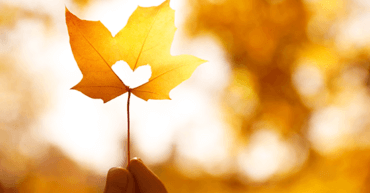December 17, 2021
The Season for Hope

By Julie Gregory, Chief Health Liaison for Apollo Health
No matter what faith tradition you come from, the holiday season provides an opportunity to believe in something bigger than yourself. It’s a time to pause, connect with our loved ones, and create memories. Almost ten years ago, when I was experiencing symptoms of cognitive decline, I was told that there was no hope, that I would lose the ability to remember. The Alzheimer’s Association informed me that Alzheimer’s was untreatable, incurable, progressive, and ultimately fatal. Stunned, I consulted the most esteemed neurologist in my area, certain that he could provide more insightful information. When I asked what I could do to turn things around, he offered, “Good luck with that.” My initial fear turned into terror as I realized I was in the fight of my life.
At first, I believed the dire news. After all, I had two copies of the ApoE4 allele that put me at very high genetic risk, and cognitive testing revealed that I was in the mid 30th percentile for my age group. It was a very dark period for me as I began to make plans for the end of my life. But, over time, I started to question the mainstream prognosis. After all, I was only 50 years old. Common sense told me that there must be something I could do to support my brain health.
As that glimmer of hope took hold, I began to devote every bit of my energy towards identifying and applying strategies to enhance my cognition. I even founded a non-profit called ApoE4.Info, which focused on learning how ApoE4 carriers can mitigate the pathological effects of our high-risk allele. Working with a community of dedicated folks with “skin in the game” led us to uncover many strong signals about potentially helpful dietary, lifestyle, and supplement strategies, along with specific biomarkers to track and tweak. As I learned about these potentially helpful strategies, I began to apply them.
1. DIET I radically changed my diet, starting with eliminating all forms of sugar and grains. I began to eat nutrient-dense, clean, whole food, nothing processed or packaged. I prioritized heaps of non-starchy vegetables, rich in phytonutrients, to support my gut microbiome and low mercury, wild-caught seafood for the omega-3s, and choline to support my brain. As I learned about the potential benefits of ketosis to help fuel my brain, I began to reduce starchy carbohydrates further and increase healthy fats. I ultimately reached ketosis and noticed a distinct cognitive clarity. My blood sugar highs and lows were replaced with a bioenergetic steadiness.
2. EXERCISE I began to exercise in a different way. Instead of engaging in grueling boot camp-style workouts (my prior favorite), I began to look forward to daily, long, rambling, solitary walks in nature, interspersed with periods of running. I eventually added strength training three to four times per week. I loved spending time in nature, challenging myself to persevere in all of the weather extremes. I sometimes gave myself cognitive challenges on my long treks. I tried to recite the alphabet backward, count backward from 100 by 7s, 8s, 9s, etc. Other times, I just listened to nature and relished in the beauty around me.
3. SLEEP For the first time in my life, I began to prioritize my health, and that included ensuring seven to eight hours of quality, restorative sleep each night. I had previously “burned the candle at both ends” and saw that as a badge of honor. Like many middle-aged women, I had been putting everyone and everything before myself. I always thought that there would be time to take care of myself later. The knowledge of my genetic vulnerability made me realize that “later” had arrived. In a weird way, it almost gave me much-needed permission for self-care.
4. STRESS MANAGEMENT Facing my own mortality led me to become very reflective about my life. I began relying strongly on my gut instincts. I took up meditation for the first time in my life. I also did a lot of praying. Both provided a tremendous sense of peace.
5. BRAIN STIMULATION I began daily brain training. This was the one area where I pushed myself to extremes. If I wasn’t able to beat my score from the day before, I stuck with it until I could. This was quite stressful and (in retrospect) certainly not something that I would recommend. I eventually began to look forward to these brain workouts. As I steadily improved, I could feel my brain coming back.
6. DETOXIFICATION I began to recognize how all of the toxins I was exposed to on a daily basis could be harming my health. I worked to clean up my exposures, starting with the basics, ensuring that the water I drank and the air that I breathed were clean. I transitioned to buying USDA organic vegetables and fruits whenever they were available. I sourced the cleanest wild-caught seafood and grass-fed meats and eggs that I could find. I switched all of my toiletries and cosmetics to non-toxic products, as identified by the Environmental Working Group’s Skin Deep website.
7. SUPPLEMENTATION As I learned about specific supplements that could be helpful for cognition, I began adding them, but only if their mechanism of action seemed to fit my clinical picture. For instance, I was very inflamed during this period and decided to trial curcumin. It was the first supplement that I began taking. I was very unwell during this period and unable to tolerate the first two brands that I tried due to side effects. I’d read many anecdotes and some promising research about curcumin, so I persisted. I eventually found one that I could tolerate, called CuraMed, and the benefit was profound. After a few days, I felt like a heavy fog had lifted, and I could finally see the sunshine. My fatigue and widespread body pain were greatly reduced. As I learned about the correlation between homocysteine and vitamin D, I began to track my levels and add supplements as needed, vitamin D3, B-12, folate, and B-6. I also began to track other biomarkers like my fasting glucose, insulin, and HbA1c.
With all of the strategies that I had cobbled together — the early genesis of the “Bredesen Seven” — I could definitely tell that my body and brain had become stronger and more resilient. I repeated cognitive testing one year later, and I scored in the mid 90th percentile for my age. I.was.stunned. I knew that I had improved but didn’t realize how profoundly.
Shortly thereafter, I stumbled across Dr. Bredesen’s seminal paper, Reversal of cognitive decline: A novel therapeutic program, in which nine out of ten patients had used a protocol very similar to the one that I (and other members of the ApoE4 community) had been using, to successfully reverse their cognitive decline. This was confirmation that we were on the right path. I reached out to Dr. Bredesen and was humbled that he was interested in my story and the ApoE4 project. We’ve been working together ever since. I’m honored to have his support and guidance as I continue my health journey.
Years ago, I was sharing my story with a group of physicians at the Buck Institute for Aging. From my vantage point on stage, I noticed two women in the front row; one was sobbing uncontrollably, and her friend, seated beside her, was holding her. As I finished my talk, the woman who’d been crying came up to me and grabbed my hand. She said, “ Thank you. I’ve been experiencing symptoms and was planning to kill myself, but now I won’t.”
I’ve heard critics accuse Dr. Bredesen of offering “false hope,” but I share my story in an effort to push back. By ignoring Dr. Bredesen’s groundbreaking work, the mainstream medical community is offering “false hopelessness” that has very real consequences. We, as a community, are now providing a beacon of hope to the entire world for a disease that has been declared to be incurable. We are rewriting the Alzheimer’s story one participant at a time.




